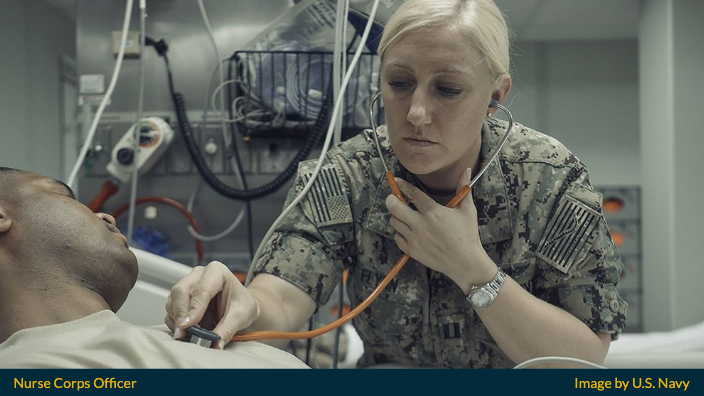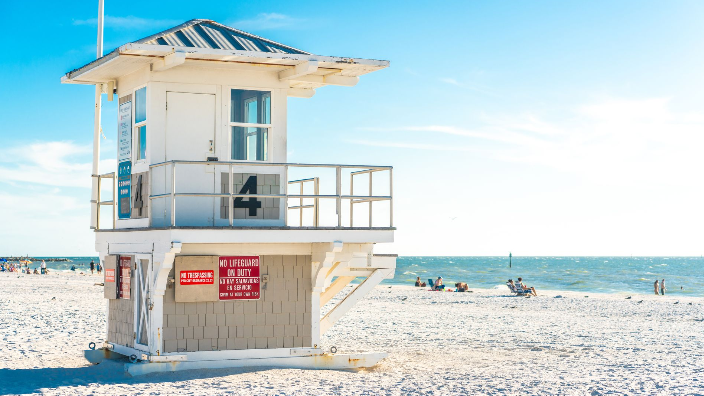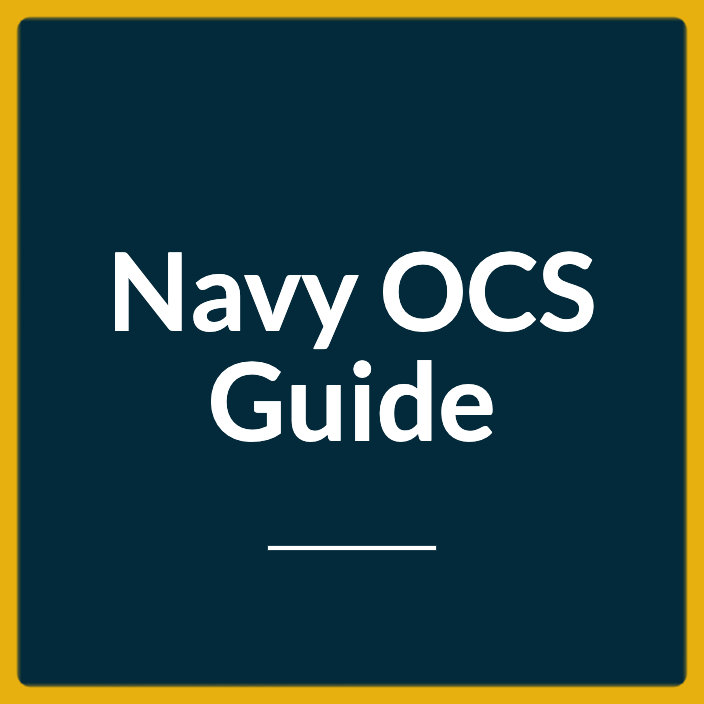Last Updated on August 30, 2023
This guide provides information about the typical duty stations of Navy Nurse Corps Officers.
Navy nurses represent an integral part of the military and may be called upon to provide medical care in difficult settings. Potential placements range from North Carolina and Hawaii to Guam, as well as combat operations abroad.
Learn more information about the U.S. Navy nursing job opportunities around the world, including naval hospitals, civilian locations, and dedicated hospital ships.
Where Can Navy Nurses Be Stationed?
Navy Nurses play an important role in the operations of the United States Navy, often serving in Military Treatment Facilities in different parts of the world. These nurses provide healthcare to a wide range of patients, gaining important experience in their field.

Assignments for Navy nurses at Medical Treatment Facilities (MTFs) may include departments such as emergency care, primary care, or mental health. These nurses will gain the knowledge to use sophisticated medical equipment and be periodically trained on new procedures and protocols related to their facility’s mission.
Moreover, they can engage in community outreach activities aiming to increase accessibility and promotion of military healthcare services.
Navy nurses provide essential support to members of the military, ensuring they receive quality care. Their dedication and commitment help to guarantee that service personnel receive optimal healthcare.
Navy nurses are essential in delivering quality healthcare services to military personnel. They have earned recognition for their efforts and commitment. North Carolina has particular initiatives in place that support its service members, which will be discussed further.
Washington, DC Area

Navy nurses in the Washington, DC area are based at Walter Reed National Military Medical Center in Bethesda, MD and Naval Support Activity (NSA) Bethesda. As one of the largest U.S. military medical centers, it offers a comprehensive health care system that renders services such as medical care for active duty personnel, state employees, retirees, veterans and their families.
They provide compassionate care and advanced services within perioperative nursing, critical care nursing, ambulatory care nursing, mental health assistance, and many other specialist areas.
Navy nurses at NSA Bethesda provide care services to active duty members of the Navy, Marine Corps, Air Force and Army, as well as their families and dependents. Their responsibilities include primary care, specialty services such as preventive medicine, general surgery and orthopedics, among other health-related fields.
Additionally, they are in charge of disease management programs, inoculation programs and family planning advice. At NSA Bethesda, Navy nurses offer trauma resuscitation; obstetric/obstetrical nursing support for neonatal delivery and pediatric preventive health programs.
Navy nurses in the Washington, DC Area can be stationed at NMCPB, FBCH, and Andrews Air Force Base. These facilities provide medical care to active duty members of all five branches of service and their families locally, as well as those who deploy annually around the world.
Virginia

Navy Nurses in Virginia are assigned to naval installations throughout the state, including Norfolk and Portsmouth, or to a Navy Medical Corps unit on board ships in local or international waters.
Naval Station Norfolk in Virginia is the largest station, with approximately 80,000 active duty personnel, 55 vessels and an array of office facilities. Navy Nurses provide medical care for soldiers at the station, performing roles such as Emergency Medical Services (EMS), Anesthesiology and Critical Care Medicine, Neonatology or Women’s Health.
The Portsmouth Naval Hospital is a medical facility at the Portsmouth Naval Station close to Virginia Beach. It offers 70 different services with 200 beds for patients. These range from acute care to long-term rehabilitative care, where Navy nurses experienced in field techniques assist Sailors recovering from injuries that have arisen aboard sea vessels heading out to sea on regular occasions.
Navy nurses work aboard ships home ported in Norfolk or abroad. They may provide healthcare to servicemen and women, which can be rewarding. Some may choose the role of Aviation Nurse Specialist, which involves specialized travel nursing service to aircraft crews around the world, as well as traditional duties at the command of an officer.
North Carolina

Navy nurses have many opportunities to work in North Carolina. The Navy has three major medical facilities in the state – two at Camp Lejeune and one at Cherry Point Marine Corps Air Station. Each facility has four-hundred beds, including general medical wards, primary care clinics, acute care facilities, and a behavioral health center. Other small military bases within the state, such as Kinston, NC, have base medical clinics available as well.
Navy Nurses have a wide range of locations where they may be employed, such as military hospitals and ships, team sites, or even field camps. These deployments could be short-term or long-term, providing an opportunity for professional growth and development under unique circumstances.
Navy Nurses who are part of an ATG team may provide emergency response capabilities across a variety of environments, such as space exploration and disaster relief operations. These Nurses always show their core values of Honor, Courage, and Commitment while providing excellent patient care during their missions.
California

Navy nurses in California may be assigned to Naval Base Coronado, Marine Corps Recruit Depot on Parris Island, Naval Air Station Lemoore and additional medical units. Members from other branches of the military who get care at a Navy facility can be found across stations outside of California.
Navy nurses can expect to collaborate with medical personnel from all branches in relation to operations or tours. Advantages of being based in California encompass access to higher educational foundations, top quality recreational facilities like trails and beaches, ensured USGI housing reimbursement, lower living costs (compared to other states), and many possibilities to explore the region.
Navy nurses who are based in California have access to specialized career development programs provided by external certified institutions. These courses enable them to gain professional experience related to ship-based duties, and build up specialized clinical capabilities that are valued in the Navy and civilian healthcare settings.
Florida

Naval Hospitals in Florida, including those in Pensacola, Jacksonville, Mayport and Key West, are staffed by Navy Nurses.
Naval Hospital Pensacola is the major facility for Navy medical services in the Southeast of the U.S. Nurses at this facility can provide care for family medicine, pediatrics, labor and delivery, emergency medicine and more. This hospital also offers specialty services such as optometry, audiology/ENT services, cardiology/electrophysiology services, ophthalmology services, behavioral health and gynecology/OBGYN care.
Naval Hospital Jacksonville provides medical and dental support for active duty personnel at Naval Air Station Jacksonville and Mayport, besides offering pediatric care at a satellite clinic in Orange Park. 80% of patients are eligible for TRICARE Prime.
The Naval Health Clinic on NAS Mayport provides healthcare services for active duty military personnel stationed at the facility, as well as for a variety of specialists offering advanced treatments for complex illnesses and injuries. Navy nurses collaborate with other medical professionals to provide comprehensive follow-up care to patients who have accessed preventive or specialized procedures.
At Naval Health Clinic Key West, the duties are largely specialized, such as flight medicine, submarine medical screening programs and dive medicine. Nursing staff are not involved in handling government contracted resources; however, they may be involved administratively during exercises or mobilization events held off base by arranging health screenings before deployment and post-deployment processing of returning ships.
Hawaii

Navy nurses in Hawaii are typically part of two commands, the Pacific Regional Medical Command (PRMC) or the Tripler Army Medical Center (TAMC).
The Navy nurse at PRMC is typically based at Pearl Harbor’s Naval Hospital or Marine Corps Base Hawaii. The hospital offers a wide range of medical and dental services to active-duty service members, retirees, and eligible dependents, such as advanced practice nursing, case management, clinical specialist programs, mental health care, etc.
Tripler Army Medical Center, in Honolulu, is a referral center for all U. S. military personnel and their families in the Central Pacific area, offering specialty services such as orthopedics/sports medicine, occupational therapy and behavioral health, as per its website.
Navy nurses can specialize in various areas, including but not restricted to critical care/trauma nursing, ambulatory care nursing and nurse anesthetist roles.
Naval Health Clinic Hawaii is based at Joint Base Pearl Harbor-Hickam in Pearl Harbor, Oahu, and provides healthcare services such as preventive care and surgery to multiple DoD facilities, including the U.S Navy Reserve Center Barber’s Point and the Hale Koa Hotel. Kapolei Medical/Dental Clinic also receives care from this clinic.
Navy nurses may be assigned to ships in Pearl Harbor, such submarines and fleet support vessels. When necessary, they may deploy to foreign ports for war missions, such as Guam, where they would provide care to crew members and Marines.
Guam

A Navy Nurse stationed in Guam is likely to work at the U.S. Naval Hospital in Naval Base Guam, in East-West Hagatna. This hospital provides services to military personnel and their family members stationed in the western Pacific region, featuring primary care, emergency and family practice, acute medical care, outpatient specialty clinics, dental treatment and imaging services.
Navy Nurses at Naval Base Guam provide physical assessment and treatments to patients dealing with medical-surgical, obstetrical/gynecological, pediatric and orthopedic/sports medicine specialties.
They also collaborate with other departments within the hospital, such as pharmacy and nutrition services along with mental health and social work services, to ensure quality care for service members and their families in Guamanian locations.
Navy Nurses may be assigned to a variety of locations on Guam, including Naval Base Guam’s U.S. Naval Hospital Facility, Marine Corps Bases, naval air station fields, and local hospitals such as Guam Memorial Hospital Authority (GMHA).
Depending on the nurse’s assignment, they may offer medical support in transfer cases or deliver intensive treatments while monitoring patients’ vital signs if needed.
Navy Nurse Corps officers in Guam work as part of larger healthcare teams, often involving other nurses and professionals from various disciplines providing comprehensive care under hard conditions, applying accurate assessment techniques to react quickly.
Japan

Navy nurses in Japan may be stationed at U.S. Navy installations, such as Yokosuka Navy Base and Sasebo Naval Base, and Japanese Ministry of Defense (Kokubunji) facilities. They provide healthcare services to Navy personnel and their families, both domestically and abroad.
The U.S. Naval Hospital Yokosuka serves over 50,000 active-duty and retired military personnel, family members, and other beneficiaries in Japan’s metropolitan area with healthcare services.
The range of coverage varies from ICU/CCU to mental health services, with specialties ranging from obstetrics/gynecology (OB/GYN) to optometry and surgery clinics. Additionally, state-of-the-art diagnostic imaging studies such as MRI scanners and ultrasound machines are used in the hospital.
Sasebo Naval Base and it is a maritime hospital that offers medical services by utilizing a fleet of laboratories both during deployments and near coastal locations. The Navy nurses assigned to this mission have a primary focus on helping servicemen during emergencies or humanitarian operations such as the Asia-Pacific region, such as Indonesia, Thailand and Micronesia, for example, through relief funds for typhoon Haiyan in the Philippines in 2013.
The Kokubunji facility provides an opportunity for nurses to pursue research through programs like joint exercises with Japan Self-Defense Forces personnel. It is located inside Izu Peninsula on the Island of Hachijō Jima and some other mainland localities such as Kagoshima city and Misaki town peninsulas in the western part of the main island Kyūshū, extending towards the Ryukyu archipelago near China’s seaboard.
Europe
Navy nurses can be stationed at many locations throughout Europe. These locations in the U.S. Navy are Rota, Spain; Naples and Sigonella, Italy; Souda Bay, Greece; and Rhein-Mein Region in Germany.
Additionally, the U.S. Navy operates vessels in European waters for Operation Enduring Freedom or against terrorism, such as the USS Abraham Lincoln Aircraft Carrier and the USS Vella Gulf guided-missile cruiser.
Navy nurses stationed in Europe could offer medical assistance to sailors and Marines on ships, as well as treatment centers and medical facilities on land.
Navy Nurse Corps personnel must be trained in trauma care and psychological treatment for service members with PTSD. They are qualified to provide emergency medical assistance and primary health services to active-duty personnel.
Navy Nurses must complete specialized homeport training before being assigned overseas in order to be adequately equipped for their role.
Overseas Deployments/Combat Operations
Navy Nurses work to deliver healthcare services to the Navy and Marine Corps. They may be deployed for combat operations or other duties.
Navy Nurses may be stationed in hazardous areas and combat zones, depending on their assignment. They provide medical attention to sailors, marines and civilians of the countries they are stationed in. Working in challenging conditions with limited resources may require long hours of work.
The length of deployments for nurses varies, depending on the mission’s requirements. While deployed, it is possible to be assigned to ships, aircraft carriers, submarines or land-based facilities. Nurses may be given specialized training to prepare for situations they may encounter while overseas.
Navy Nurses show courage and bravery when serving in foreign countries, risking their own safety to provide care to those in desperate needs. Their dedication and commitment makes them heroes within the Navy.
Military Treatment Facilities Worldwide
United States military personnel can access healthcare services from Military Treatment Facilities (MTFs). These facilities offer primary care, including routine and specialized medical care, dental services, mental health counseling, and other related health services.
MTFs are located globally, in various U.S. states, as well as Europe, Asia Pacific, Africa, and Central America. Medical staff of MTFs include doctors, nurses, dentists, mental health counselors and specialists to deliver quality healthcare services to military personnel.
Military Treatment Facilities provide quality healthcare for active duty personnel and veterans. Their primary goal is to ensure access to necessary medical care for those in active service and veterans, regardless of location.
Benefits of Being a Navy Nurse
Navy nurses are professionals trained to provide care for members of the U.S. military. They work in different roles, from offering medical assistance to active duty personnel to making their expertise available at Military Treatment Facilities globally.
Navy nurses can earn competitive salaries, health insurance and educational assistance, as well as the opportunity to work in various settings. Additionally, opportunities for career advancement are available through promotion or assignment to specialized positions.
Navy nurses serve their country, and can be proud of their work, knowing that it contributes to the nation’s security and wellbeing. They may provide medical care on the front lines or in an MTF.


